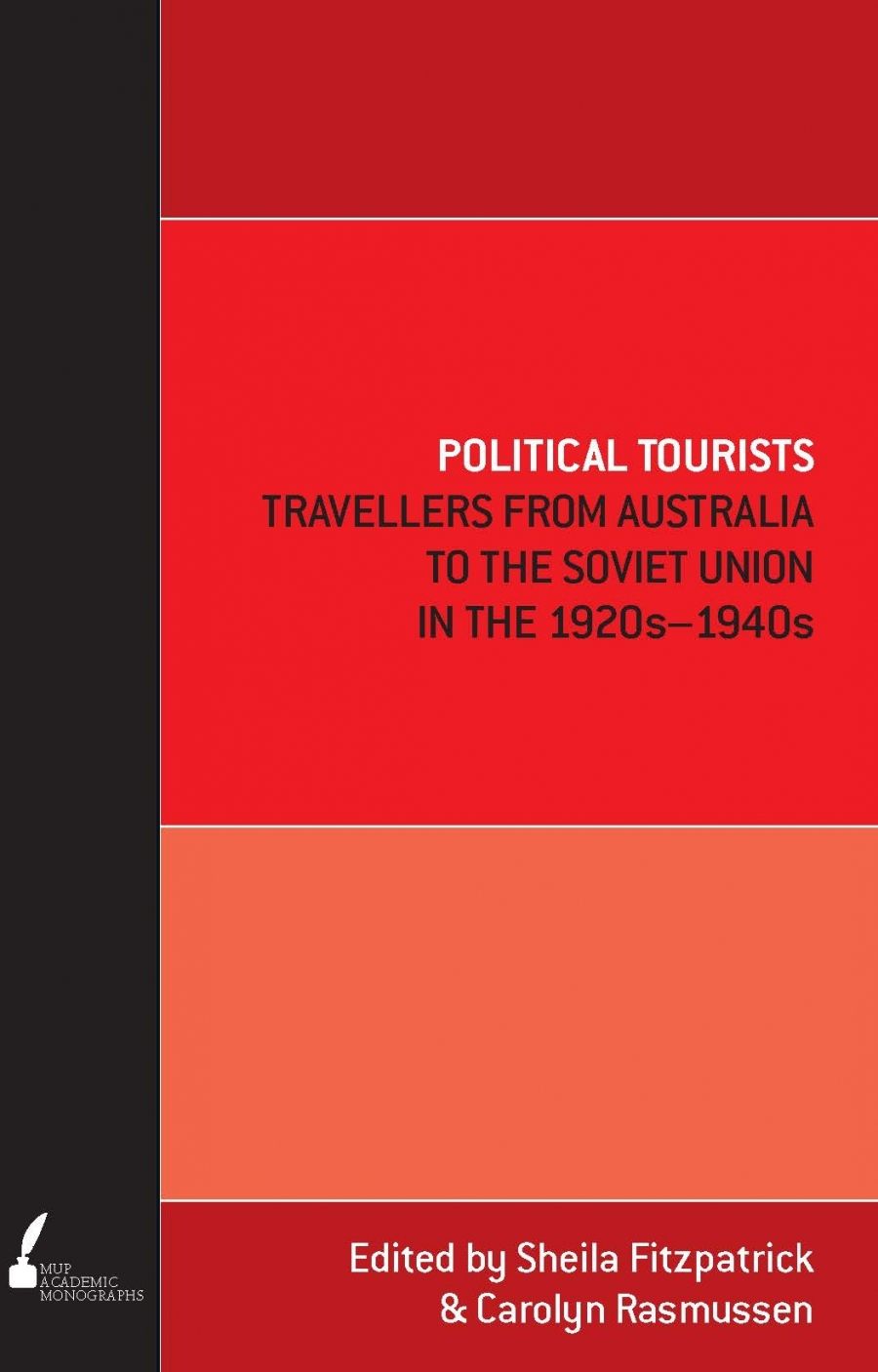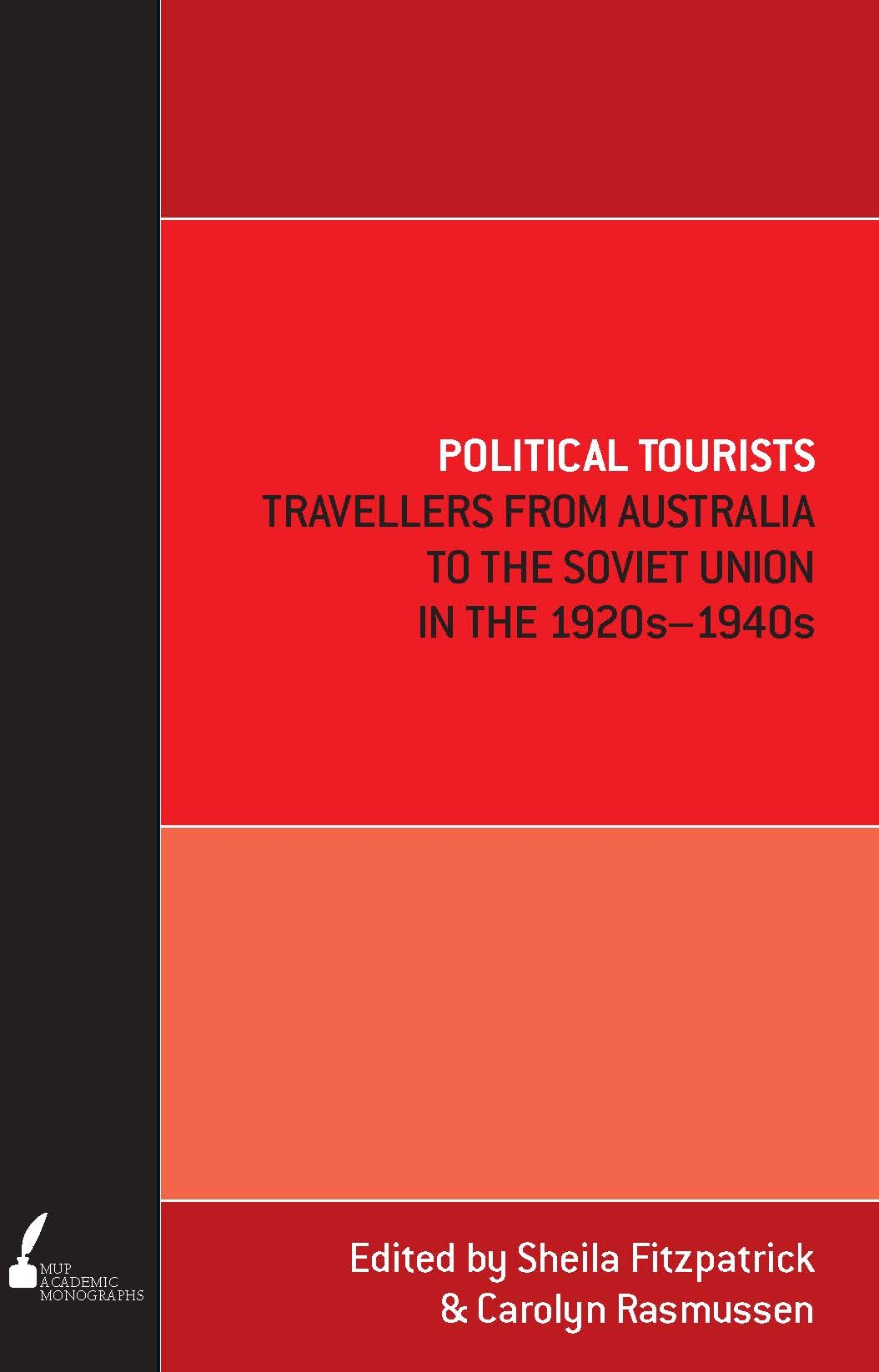
- Free Article: No
- Custom Article Title: Future eaters
- Review Article: Yes
- Article Title: Future eaters
- Online Only: No
- Custom Highlight Text:
In the years between the two world wars, the young Soviet Union was, for socialist intellectuals and many liberals in the West, a social laboratory, one that held the promise of a new world order. Inspired by the transforming power and promise of the October Revolution of 1917, some were drawn to admiration of the great Socialist Experiment ‘in a land where revolutionaries were trying to create a socialist society based on the principles of central economic planning’.
- Book 1 Title: Political Tourists
- Book 1 Subtitle: : Travellers from Australia to the Soviet Union in the 1920s–1940s
- Book 1 Biblio: MUP, $49.95 pb, 312 pp
- Book 1 Cover Small (400 x 600):

- Book 1 Cover (800 x 1200):

It has become a standard criticism of the idealistic visitors who made the Russian journey in the fragile early years of the new Soviet state that they were gullible, even wildly optimistic. The term ‘fellow travellers’, originally a prosaic description for a shared experience, eventually gained the pejorative meaning it retains. For so many of the Australians, not speaking Russian and therefore dependent on guides and interpreters, it was, some have argued, too easy for them to be seduced, even brainwashed. But the Soviet experiment was exciting and compelling. In the phrase used originally by the American journalist Lincoln Steffens, foreign visitors of various nationalities were able to return from their journeys and to declare in varying degrees of enthusiasm and rapture that they ‘had seen the future and it works’. In its time, that large claim became a banner. The phrase was used as the exultant epigram to the book Red Virtue (1933), written by Steffens’s Australian wife, Ella Winter, whose story is one of the case studies presented in the Fitzpatrick–Rasmussen collection. In a letter written to Steffen in 1930, Winter rhapsodised: ‘Oh Steff never will I have such a thrill again as this first view of Soviet Russia – a thrill as nowhere on earth … It is idealistic and logical and it works.’
If the principles of central economic planning now sound dry and are judged more sceptically, in the years covered by these travellers’ tales they held out high promise of a better society. As Ros Pesman stressed in her book Duty Free: Australian Women Abroad (1996), the Soviet Union was somewhere people went in the 1930s in order to look at the political system, just as they might go to Italy to look at the art. And there were many innovations to admire: in social welfare, especially the fields of health and education; in theatre, both traditional and avant-garde; and in film, opera and in the world of art and its presentation. Muriel Heagney, the Melbourne Trades Hall activist, carried out an energetic programme of inspections of prisons, schools and medical centres. Feminists applauded the obvious broad equality enjoyed by the new Soviet woman. Ella Winter was among them: ‘For the first time in the history of the world, a country is abolishing all discrimination on the ground of sex between men and women.’
While the more brutal coercions of the Soviet polity were kept from visitors – and remained publicly unacknowledged later by diehards such as Prichard (‘Comrade Katya’) – not all the visitors were uncritical; reservations and doubts were carried home, though not all of those are adequately essayed here. Some of the cooler responses are only briefly sketched in Fitzpatrick’s excellent introductory survey chapter. At some stage, it would be good to have a more detailed reporting of the visits made by the two Australian economists Edward Dyason (from Melbourne) and Charles Hawker (from South Australia). The journalists Frederick Howard and Basil Burdett (both from Melbourne) were markedly antagonistic to their Soviet experience, angering not only their ‘fellow travellers’ but also their Russian hosts.
One of the strengths of this collection of essays is the two-way view it presents of several of those making the Soviet pilgrimage. While all the visitors were bent on observing a vast country in the flux of massive social engineering, the visitors were observed and judged by their Soviet hosts. Many of the visits were organised by VOKS, the All-Union Society for Cultural Contact with Abroad, and it is in the archives of this powerful quasi-official agency that Fitzpatrick first understood that the Australians might be exposed in interesting and not always flattering ways. She provides some fascinating glimpses of the judgements and observations made by the personnel of VOKS, generally more subtle and sophisticated than might have been realised.
In a later chapter, in which Fitzpatrick looks coolly at the brief diplomatic posting to the Soviet Union of the Melbourne historian Max Crawford, something of his vanity and emptiness is brilliantly laid open to scrutiny, assisted by the VOKS observations. Just as Crawford later made a meal of the ‘heavy burdens of administration’ in his Melbourne History School as excuses for projects deferred or abandoned, so his Soviet posting amounted to little more than a dead end. The taste of ashes lingers in this sad portrait of waste and futility.
This book is issued by its publisher in pdf form as an ‘electronic resource’ and ‘on demand’ in paper (for which an exorbitant price is asked).


Comments powered by CComment